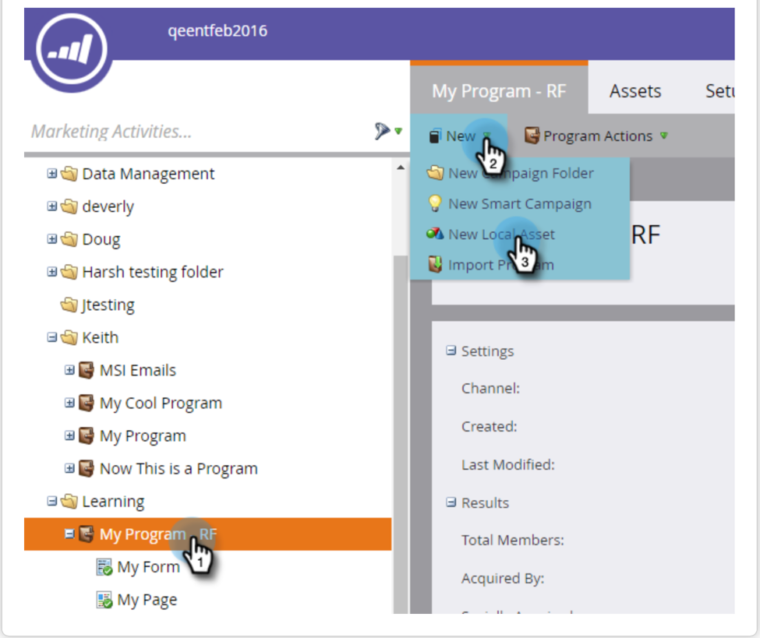Marketing automation is quickly becoming crucial for businesses to be successful in their marketing efforts. So what is it?
Marketing automation is a subset of customer relationship management (CRM) and is designed to replace marketing tasks and processes that would otherwise be done manually. These are the tasks that, without automation, are time-consuming and prone to human error. This, of course, leaves customers or potential customers frustrated, and results in decreased conversion rates.
According to Aberdeen Group, “Marketing Lead Management Report” (2012), “companies using marketing automation see 53% higher conversion rates from initial response-to-MQL and a revenue growth rate that is 3.1% higher than non-users.”
So what are some of the biggest concerns and barriers for marketers and companies looking for a marketing automation platform? Marketing automation can be expensive, there are many options, and several of these automation tools offer the answer to one automation need such as email marketing, but don’t have an “all-in-one” solution.
Other issues that arise when companies are looking for a solution are budget constraints and ease of use. Let’s compare some of the tools and their offerings: Marketo, GetResponse, and HubSpot.
Price
When it comes to price, GetResponse offers competitive pricing and is much more affordable than Marketo or HubSpot. GetResponse’s prices range from $15 to $799 per month. The best part is that they don’t require contracts and allow users to cancel anytime. They price match the number of subscribers that a business has, allowing for businesses to scale, only increasing spend as their business grows.

HubSpot is also priced competitively, although it’s range is a bit higher than Get Response. However, HubSpot charges a one-time fee of $600, $3,000, or $5,000 (depending on the package you choose) for onboarding. After you pay the onboarding fee their cost ranges from $200 per month for the basic subscription to $2,400 per month for an enterprise package. They also match their pricing to the number of subscribers a business has, but their cost starts much higher. Hubspot’s major benefit is pre-built integrations with popular business apps and includes these custom integrations to their users as part of the service.

Marketo is the most expensive of the three. However, their system is broken into four offerings that can be purchased separately or combined. The four offerings are marketing automation, real-time personalization, marketing management, and consumer engagement. Utilizing these four services together is typically the most suitable for larger enterprises. In fact, their packages start at roughly $2,000 per month and get as high as $12,000 per month. Again, this is definitely a tool for a much larger organization. They also integrate with SalesForce, making it a better option for large businesses that are already using SalesForce CRM.

Ease of Use
A lot of companies looking into marketing automation lack the in-house talent to actually manage the automation. This is a major problem for businesses already trying to weigh the cost of marketing automation against the return.
GetResponse is built to be more user-friendly. It provides simplicity in customizing newsletters, landing pages, and autoresponders. The platform offers over 500 responsive web template designs, customizable landing page templates, and action-based autoresponders. With so many out of the box solutions, most important tasks can be done without the need for a MA software specialist. This is definitely the better option for businesses operating with less technological proficiency in the marketing team.

HubSpot is also an intuitive platform. They are not as simple as the drag-and-drop function that GetResponse has, but they are still simple to use. Where it may lack slightly in ease of use, it makes up for in tracking. HubSpot allows users to not only create email marketing campaigns, landing pages, and auto-responders, but they have easy to understand and manage analytics for each. HubSpot is the best for mid-size companies that may or may not have an analyst or IT department in-house, but still have a slightly larger budget for marketing automation.

Marketo is by far the more complex of the tools mentioned here, but is much more suitable when working with teams. It offers fully responsive landing pages and landing page editing tools that allow users to save and collaborate. This promotes ease of use when working with a team, but may not be as practical a smaller company. When it comes to automated responses, Marketo is much more complex, requiring a series of steps to create and save automated functions. Again, Marketo is ideal for larger teams working with a variety of marketing roles with varying expertise and responsibilities.

Overall, when choosing a marketing automation platform, it is important to honestly appraise your in-house resources. If you have a sophisticated and dynamic marketing team with a larger budget, Marketo may be right for you. If you are a smaller company that is trying to scale with a less developed marketing team, GetResponse is probably the choice for you. Whatever your situation is, don’t ignore marketing automation. It is important and available for companies of all sizes and marketing abilities.
Image Credits
Featured Image: galdzer/DepositPhotos.com
All Screenshots by Cynthia Johnson. Taken August 2016.





![AI Overviews: We Reverse-Engineered Them So You Don't Have To [+ What You Need To Do Next]](https://www.searchenginejournal.com/wp-content/uploads/2025/04/sidebar1x-455.png)